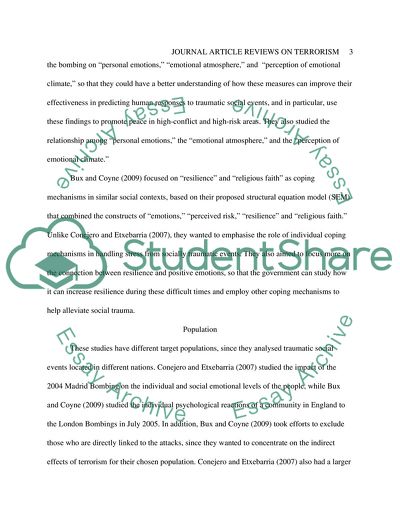Cite this document
(The Impacts of Terrorism Research Paper Example | Topics and Well Written Essays - 2000 words, n.d.)
The Impacts of Terrorism Research Paper Example | Topics and Well Written Essays - 2000 words. https://studentshare.org/psychology/1755805-2-journal-article-reviews-on-terrorism
The Impacts of Terrorism Research Paper Example | Topics and Well Written Essays - 2000 words. https://studentshare.org/psychology/1755805-2-journal-article-reviews-on-terrorism
(The Impacts of Terrorism Research Paper Example | Topics and Well Written Essays - 2000 Words)
The Impacts of Terrorism Research Paper Example | Topics and Well Written Essays - 2000 Words. https://studentshare.org/psychology/1755805-2-journal-article-reviews-on-terrorism.
The Impacts of Terrorism Research Paper Example | Topics and Well Written Essays - 2000 Words. https://studentshare.org/psychology/1755805-2-journal-article-reviews-on-terrorism.
“The Impacts of Terrorism Research Paper Example | Topics and Well Written Essays - 2000 Words”. https://studentshare.org/psychology/1755805-2-journal-article-reviews-on-terrorism.


